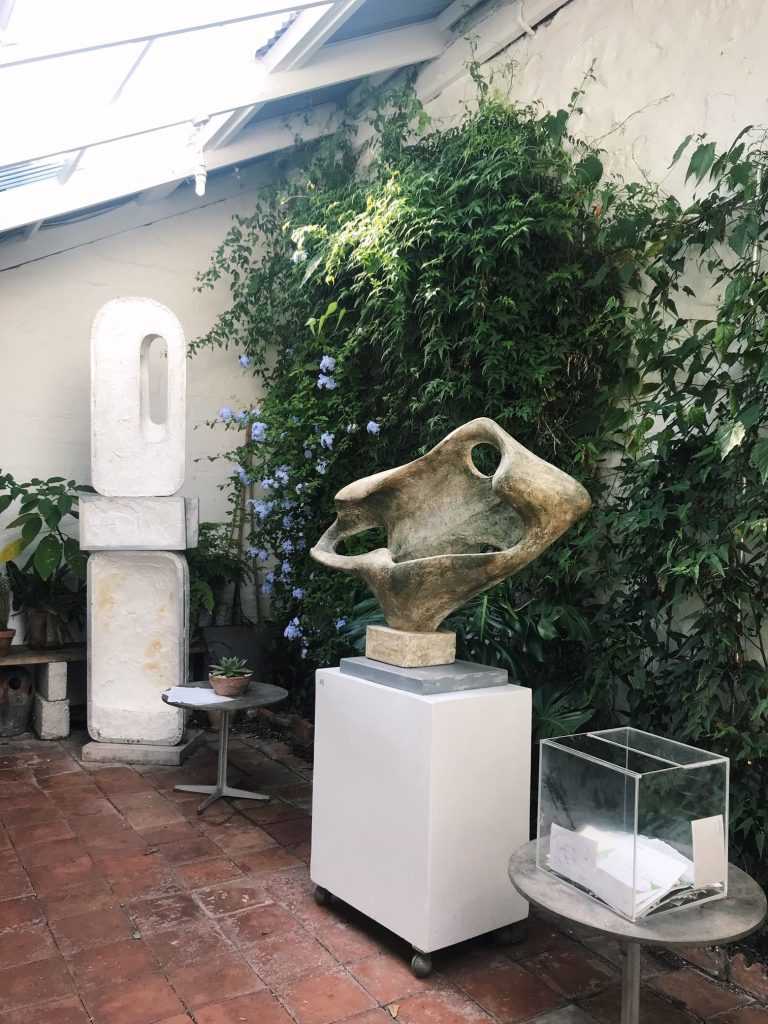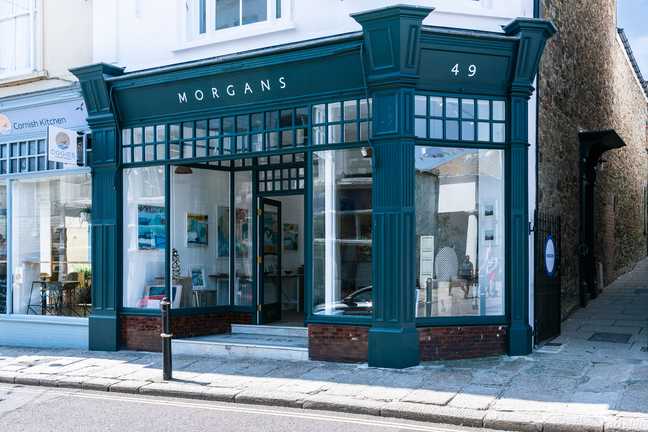
The Arts in Cornwall
Inspired by the sea
From the artists of the Newlyn School who hid themselves away in Lamorna, to the Barbara Hepworths and Ben Nicholsons of the St Ives School, the legacy of art made within Cornwall has an international reputation. So what is it that makes Cornwall so perfect for artists? Some say it might be down to the unique quality of the light, the way the sun reflects upon the sea on three coasts, creating a clarity perfect for painting. For others the people offer inspiration, with the laid-back way of living and a sense of community allowing galleries, studios and creativity to thrive

It is impossible to talk about Cornish art without thoughts of St Ives drifting into mind. Frequented by artists since the railway was built in 1877, it was during the post-war period that the most memorable artworks were produced. The outbreak of World War 2 brought Barbara Hepworth and Ben Nicholson to St Ives, and with them the abstract avant-garde movement well and truly arrived in Cornwall. Hepworth’s sculptures in particular make reference the neolithic stone sculptures that appear all over West Cornwall. The Tate St Ives & Barbara Hepworth Museum and Sculpture Garden demonstrate the unique positioning of St Ives within the cultural landscape and permanent and visiting exhibitions bring artworks of worldwide acclaim to Cornwall.

Closer to home in the Falmouth and Helford River area in which we operate, Falmouth Harbour and the clear glistening waters of Arthur’s Cove provided inspiration to famous British painter Henry Scott Tuke, whose images of local fishermen hang in The Royal Academy and the Falmouth Art Gallery. Works by emerging Cornish talent can be seen at Beside the Wave, a beautifully curated gallery on Falmouth’s High Street with everything from bespoke ceramics to oil paintings.

Frenchman’s Creek on the Helford River may have been placed on the map by writer Daphne Du Maurier, but today it’s where you’ll find Kestle Barton, an award-winning centre for rural art. Site specific artworks and performances, drawing inspiration from the landscape, happen on a regular basis and the garden (designed by James Alexander Sinclair) is a living artwork in itself. Our top tip for a visit is to catch a ferry from the north side of the river at Helford Passage to Helford Village walk up the creek to the Art centre.
At CAST in Helston artist studios sit alongside exhibition spaces, and a vibrant series of events both indoors and out makes a visit very worthwhile. This former school is the place to be for an inspiring lunch or dinner followed by either a talk, film screening or poetry reading.
Carved into the clifftop at Porthcurno, the famous Minack Theatre was built by a patron of the local amateur dramatics society especially for a performance of Shakespeare’s ‘The Tempest’. The dramatic clifftops and seascape would have paired extraordinarily well with a play that lays its scene with a shipwreck.

Penzance is where you can find the Exchange gallery showcasing contemporary art, along with the creative galleries and shops on trendy Chapel Street. Close by is the famous Newlyn School of Art which runs short courses for creatives and the Newlyn Art Gallery, with a regular run of exhibitions and a cafe with sublime views out to sea. It was artists from the Newlyn School that chose to settle in Lamorna, a quiet hamlet of just a few houses not too far from Porthcurno. Among the artists who founded the Lamorna Colony were Alfred Munnings and Laura Knight, dramatised in the novel ‘Summer in February’ by Jonathan Smith (and later adapted into a film with the same name). Like Hepworth in the north, these artists were drawn to Lamorna by the light and the inspiring surrounding landscape. The relatively cheap rent and romance of the old fishermans cottages must also have been a pull towards this particular part of the world.
Take a look below to see our video clip of what art-lovers can expect to enjoy on a visit to Falmouth.
Properties in our portfolio with a creative link;
The Boat House in Port Navas is a restored artists studio.
The Old Kiln in Port Navas was once the home of a renowned sculptor.
The Gig and Giggle in Falmouth sit right beside the old Falmouth Art School.
23 Florence Terrace is a creative house a stone’s throw from Falmouth University’s creative Falmouth Campus on Woodlane.

